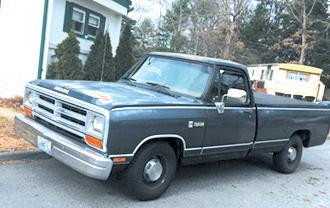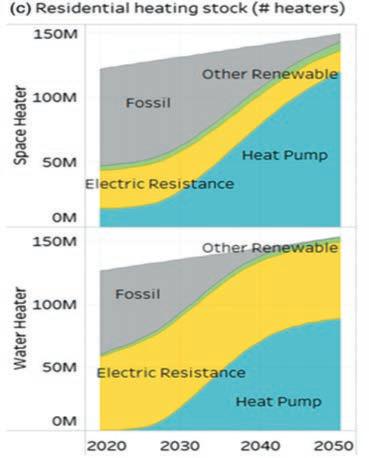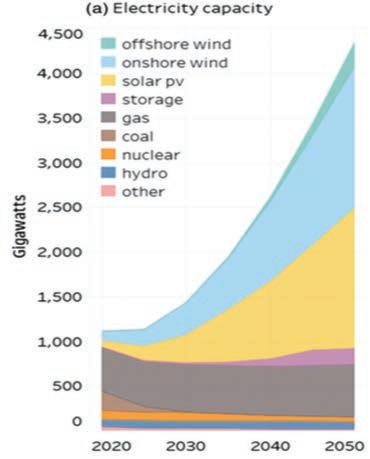
3 minute read
Real Estate
Autos for Sale/Wanted Trucks & Vans Sport Utility Vehicles Autos for Sale/Wanted Trucks & Vans

DONATE YOUR CAR TO VETERANS TODAY! Help and support our Veterans. Fast - FREE pick up. 100% Tax deductible. Call 1-800245-0398.
2008 JEEP PATRIOT: 4WD, 157K. Good condition. Asking $2500. 862-5908.
Hrs. CASH... Any situation. Any condition. Call today, 595-8703.
Money to Borrow/Loan
TIRED OF RENTING?
Antique/Classic
Camping Trailers
Reaching Carbon Neutrality For $1 A Day
(NAPS)—Zero net emissions of carbon dioxide from energy and industry can be achieved by 2050—and it could cost only about $1 a day. at’s the nding of a new study by James Williams at the University of San Francisco and Margaret S. Torn at the Lawrence Berkley National Laboratory. e study can be found in the peer-reviewed journal AGU Advances, which publishes high-impact, open-access research and commentary across the Earth and space sciences.

Why It Matters
Did You Know?
Zero net emissions of carbon dioxide from energy and industry can be achieved by 2050—and it could cost only about $1 a day, according to the peer-reviewed journal AGU Advances. For more information and to read the study, visit news.agu.org.
Buy, Sell or Rent
Lead-in copy for online posting
Zero net emissions of carbon dioxide from energy and industry can be achieved by 2050. /// Reaching Carbon Neutrality For $1 A Day
First Time Home Buyer?? Call 828-2100 today to nd out if you qualify for a $17,500 Grant to buy! inking of selling?? Call 828-2100 today for a Free Market Analysis to nd out what your property is worth today!

#Zeronetemissions of #carbondioxide from #energy and #industry can be achieved by 2050—and it could #cost only about $1 a day. #wind #solar #battery #climatechange #electric #technology
#cleanenergy #renewable #infrastructure
#cars #building #health #@theAGU #@AGUAdvances
Photo credit: AGU
Vehicles will need to be mostly electric. Residential space and water heaters will need to be powered by heat pumps or electric heaters.
According to the Intergovernmental Panel on Climate Change (IPCC), the world must reach zero net carbon dioxide emissions by mid-century to avoid the most dangerous e ects of climate change.
How To Do It e researchers say it can be done by:


•Increasing energy e ciency.
•Switching to electric technologies.
• Using clean energy (especially wind and solar power).
• Deploying a small amount of carbon capture technology.
Why It Works e cost of rebuilding the U.S. energy infrastructure to run primarily on renewable energy is lower now than even ve years ago, according to the study. e net costs range from 0.2% to 1.2% of GDP, depending on di erent trade o s, including how much land is given to solar and wind farms.
Transforming Infrastructure
“ e decarbonization of the U.S. energy system is fundamentally an infrastructure transformation,” explained Margaret Torn, a senior scientist at Lawrence Berkeley National Laboratory. “It
Photo credit: AGU means that by 2050 we need to build many gigawatts of wind and solar power plants, new transmission lines, a eet of electric cars and light trucks, millions of heat pumps to replace conventional furnaces and water heaters, and more energy-e cient buildings—while continuing to research and innovate new technologies.”
In the least-cost scenario to achieve net zero emissions of carbon dioxide by 2050, wind, solar, and battery storage capacity will have to increase several-fold.

In this transition, very little infrastructure would need “early retirement,” or replacement before the end of its economic life. “No one is asking consumers to switch out their brandnew car for an electric vehicle,” Torn added. “ e point is that e cient, low-carbon technologies need to be used when it comes time to replace the current equipment.”
Doing Well By Doing Good ere’s even an economic upside to doing all this.
“All that infrastructure build equates to jobs in the U.S., as opposed to sending money overseas to buy oil from other countries,” Torn said. “ ere’s no question that there are a lot of jobs in building a low-carbon economy.” e cost gures should be lower still considering the economic and climate bene ts of decarbonizing energy systems. For example, less reliance on oil will mean less money spent on oil and less economic uncertainty due to oil price uctuations. Climate bene ts include the avoided e ects of climate change, such as extreme droughts and hurricanes, avoided air and water pollution from fossil fuel combustion, and improved public health.

Learn More For more information and to read the study, visit news.agu.org.
FOR RATES & INFO CALL: 821-2216
Tag words
Coventry: Spacious 2 bed, 2 bath one level condo, gas FP, sunroom, central air, deck, garage, 55+ community, $434,900

West Warwick: 4 lots selling as one package, utilities available, close to Rt. 95, schools, call for details, $49,900 zero net emissions, carbon dioxide, energy, industry, wind, solar, battery, climate change, electric, technology, clean energy, renewable, infrastructure, cars, buildings, health, jobs, economy
REAL ESTATE SECTION
Tweet is
#Zeronetemissions of #carbondioxide from #energy and #industry can be achieved by 2050—and it could #cost only about $1 a day. #wind #solar #battery #climatechange #electric #technology
#cleanenergy #renewable #infrastructure
#cars #building #health #@theAGU #@AGUAdvances








